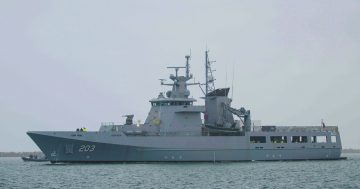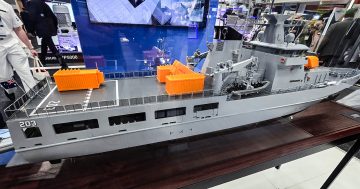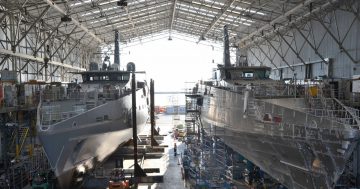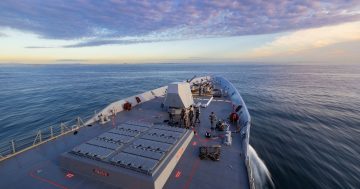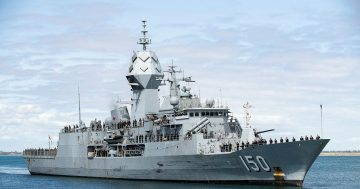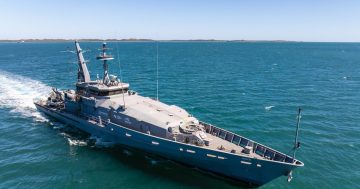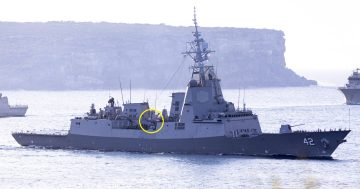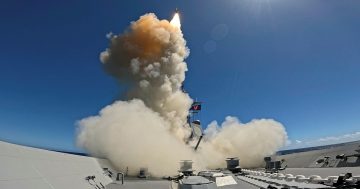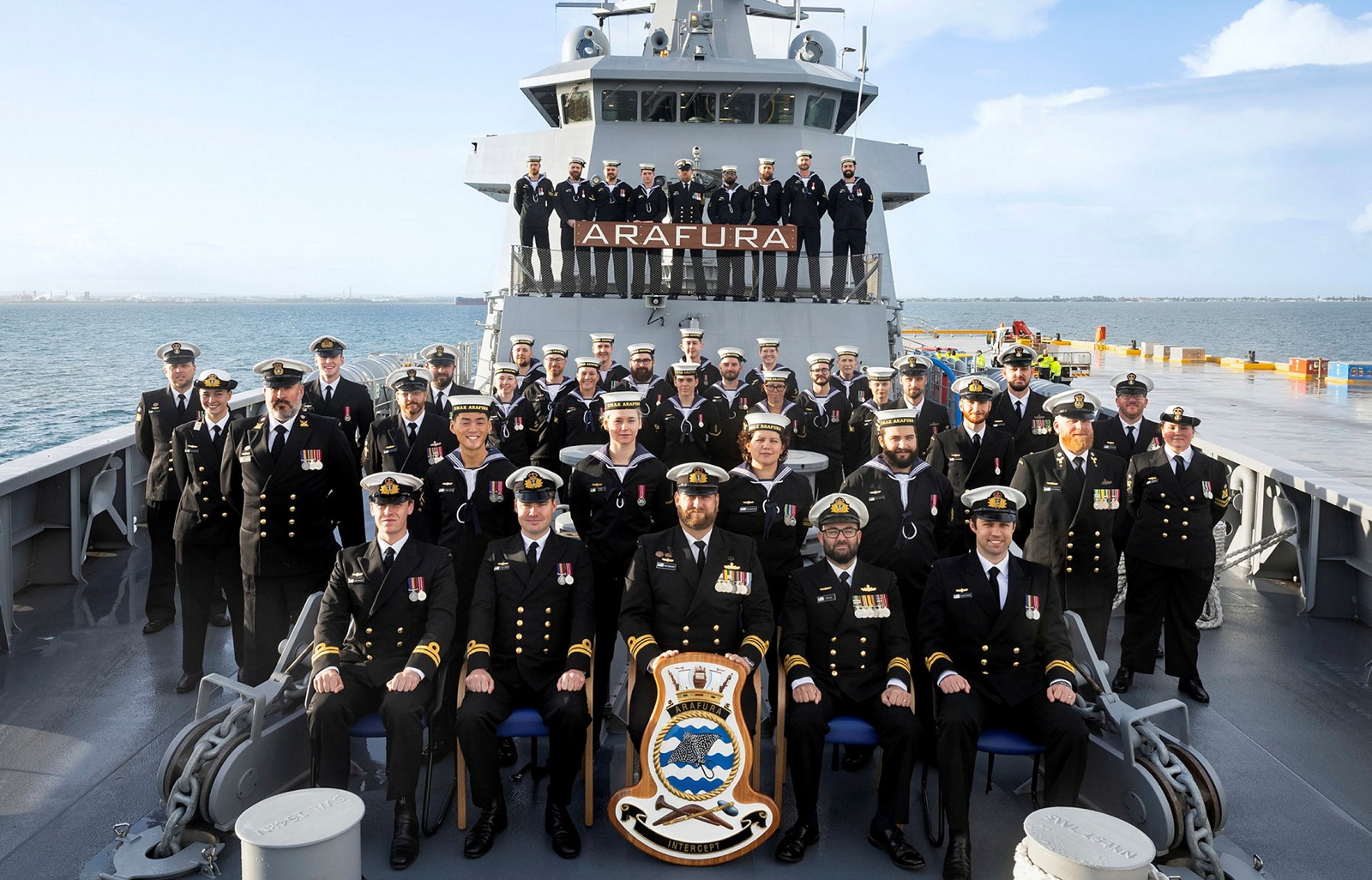
HMAS Arafura was commissioned on 28 June at Stirling, near Fremantle in Western Australia. Photos: ADF.
The first of six Arafura-class offshore patrol vessels (OPVs) has been commissioned into service with the Royal Australian Navy.
HMAS Arafura was commissioned on 28 June at Stirling, near Fremantle in Western Australia, in the presence of Minister for Defence Personnel Matt Keogh and Chief of Navy Vice Admiral Mark Hammond.
At 1640 tonnes displacement and 80 metres in length, the new vessels dwarf the Navy’s current Armidale, Cape, and Evolved Cape-class patrol boats, and will have a range of more than 4000 kilometres. They have a complement of 40 crew, and a flight deck and mission deck that can embark sea boats, small helicopters, or uncrewed aerial or surface systems.
The ships are being acquired under Project SEA 1180 Phase 1, which had originally planned to build 12 OPVs for the navy. The first two vessels have been built at Osborne in Adelaide, with the balance to be built by Civmec at Henderson, near Fremantle.
The Arafura is based on Luerssen’s OPV80 design as operated by the Royal Brunei Navy. The design was selected in November 2017, contracts were signed with Luerssen Australia in January 2018, construction of the first two vessels at Osborne began in November 2018, and work on the third OPV started at Henderson in late 2020.
In December 2020, the Commonwealth announced that Raytheon Australia had been appointed as the capability life-cycle manager for the Arafura class, while the OPV Enterprise – comprising project representatives from government and industry – was established in February 2021 to oversee the building program and subsequent sustainment of the class.
Delivery of the first OPV was originally scheduled for early 2021, but the first vessel wasn’t launched until December 2021 and wasn’t handed over to the navy until February 2025.
A late-2022 analysis revealed significant delays with the shipbuilding program, placing cost pressures on the budget. The government also expressed concerns about the vessels’ seaworthiness and lack of armament.
The Labor Government’s 2023 Defence Strategic Review saw the number of OPVs to be acquired halved to just six ships, and that a new class of up to 11 larger frigates offering greater combat capability would be built under Project SEA 3000 instead.
The review also saw several additional Evolved Cape-class boats ordered from Austal to cover a capability gap between the OPVs and the decommissioning of some of the older Armidale patrol boats.
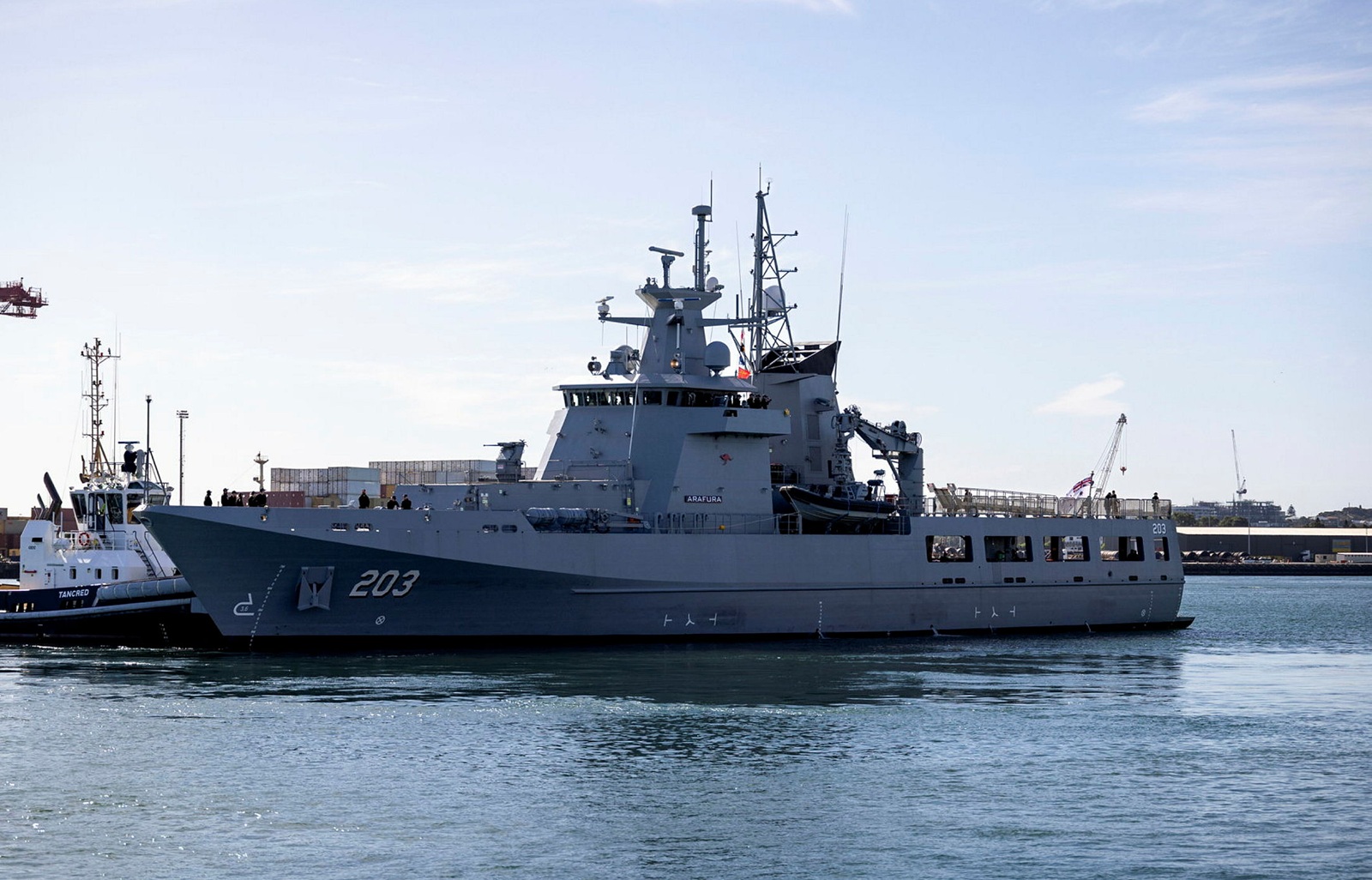
The Arafura-class OPVs are based on Luerssen’s OPV80 design as operated by the Royal Brunei Navy.
The OPV design was also planned to be adapted for several mine warfare and survey vessels, but this was not progressed in the review and, in late 2023, the SEA 1180 project was added to the government’s Projects of Concern list.
The OPVs’ primary role has been described as a constabulary one, conducting border control, fisheries, humanitarian and disaster recovery (HADR), and other missions primarily in Australia’s north.
Defence Minister Richard Marles said the commissioning of HMAS Arafura marked an important milestone in the implementation of the government’s Surface Fleet Review.
“HMAS Arafura means that the navy can continue to ensure the safety and security of our maritime borders,” he said.
Minister for Defence Industry Pat Conroy said the delivery was an excellent example of the government’s partnership with defence industry.
“The Australian Government has worked collaboratively with Defence and Luerssen Australia to successfully deliver HMAS Arafura, with another ship on the way and four more under construction at Henderson,” he said.
“The construction of the remaining four ships is on track and continues the Australian Government’s investment in a productive, continuous naval shipbuilding and sustainment industry.”
VADM Hammond said: “In the context of being a maritime nation, as the custodians of the third-largest exclusive economic zone in the world, patrol vessels like these are critical enabling assets.
“And a ship with 1600 tons in size is replacing ships with only 300 tons in size. So much, much better sea-keeping capabilities, much better endurance, much better control capabilities, and therefore the significant improvement for the Royal Australian Navy.”
Of the delays to the program and the design issues with the ship, VADM Hammond said some modifications had to be made.
“When we compared the overseas design against the Australian regulatory framework … there were some modifications that had to be made,” he said, adding that structural fire protection was an example, where the fire pump had to be moved out of the engine room.
“We had to make some adjustments, particularly around assured fire protection for the ship’s company, so we’re very thorough about that,” he said.
“It took a bit of time … and we’re very comfortable we’ve resolved all of those issues.”
Partly because of the cuts to the OPV program, Luerssen has decided to pull out of Australia and recently agreed to a sale of the Luerssen Australia business, including all assets, employees and licences, to Civmec.


